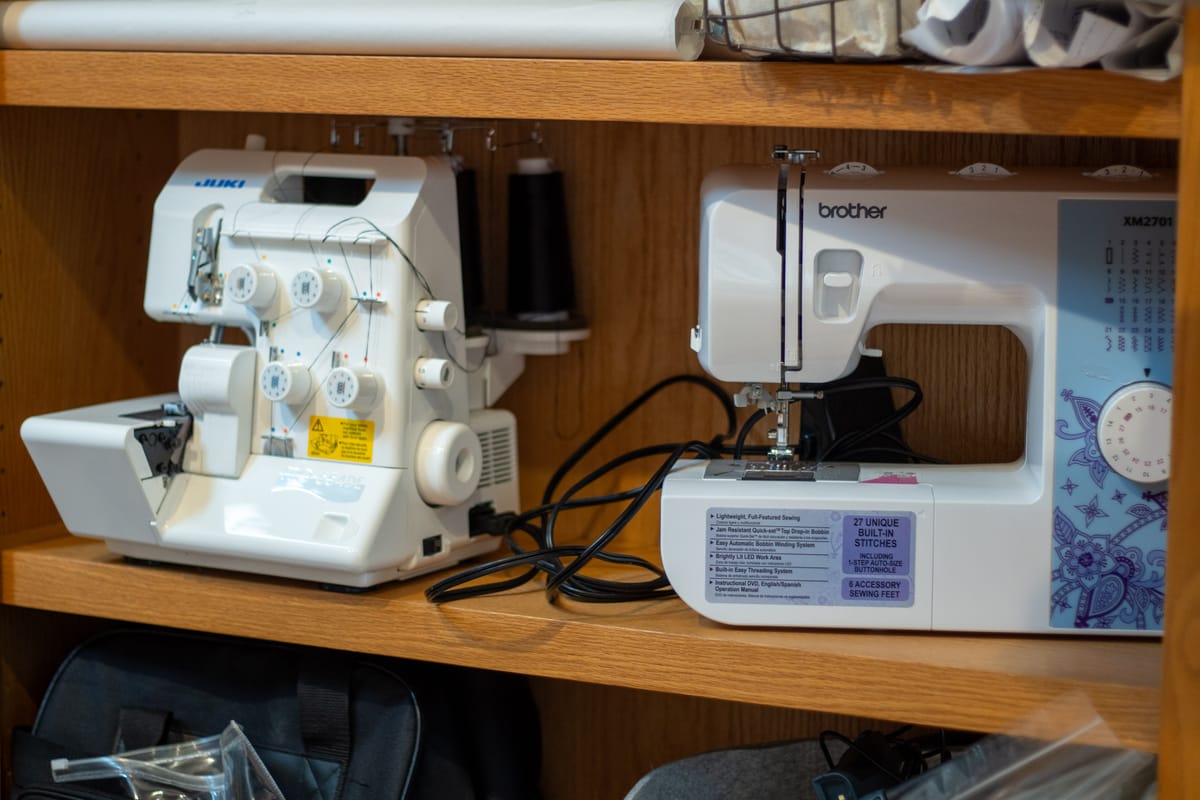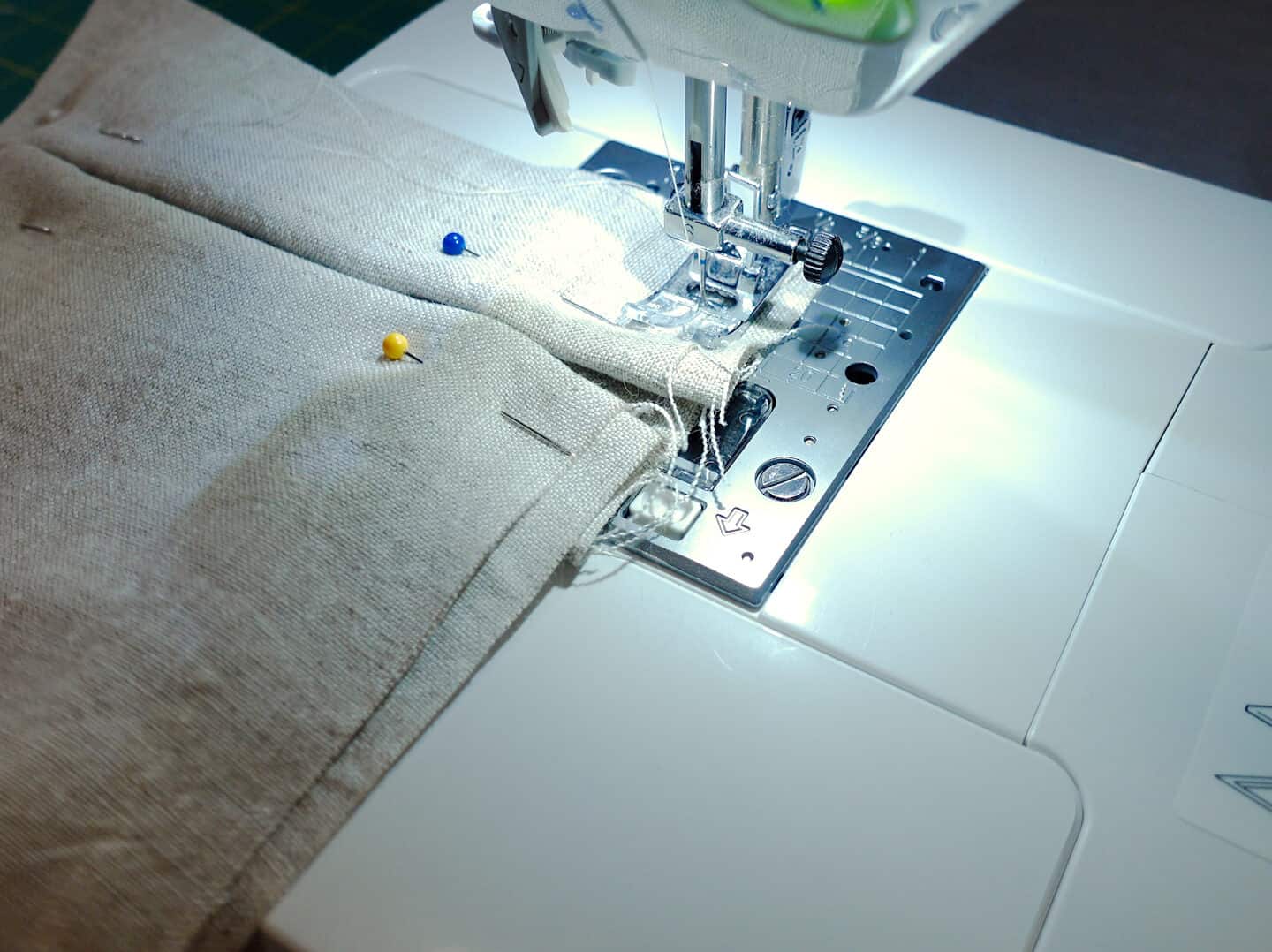5 Tips for Sewing Machine Shopping
I recently decided to upgrade from my Brother sewing machine to a fancy computerized one, and boy oh boy did I encounter a steep learning curve! There are far too many options, brands, and price points to hone in on a machine quickly.

I recently decided to upgrade from my Brother sewing machine to a fancy computerized one, and boy oh boy did I encounter a steep learning curve! There are far too many options, brands, and price points to hone in on a machine quickly. So, I’ve decided to compile 5 tips to help any sewist shopping for a new machine!
Tip #1: Review where you’re purchasing from
Review where you’re purchasing from (return policy, can you try it out first, cost to tune up machine/repair). I have purchased two machines online and one from a local sewing machine store. The two I purchased online were simple and without any issues. The Viking was purchased from a local store and I had continual issues with both the machine and the store. The store itself has a no return policy with no exceptions. This meant that even though the machine I purchased was faulty, I was not able to return it and would have to pay to have it fixed. Thankfully I paid with a credit card and was able to do a charge back, which resolved in my favor. I haven’t needed to contact Juki or Brother customer service, but the Viking customer service was not great, so there weren’t really any resources for me to resolve my issues with the machine through the manufacturer warranty.
Tip #2: What accessories come with the machine?
Do you need to stay within the brand or can you buy generic feet/bobbins, etc. Since I am mostly sewing garments, having lots of feet available to buy from wherever is important. Name brand accessories can get expensive, for example the Viking Opal 670 I purchased had a throat plate with only metric units on it, so I had to spend $75 to get one with inches right off the bat. Even the bobbins for the Viking were special and and more expensive than other bobbins I’ve purchased. However, both my Juki and Brother either came with everything I’ve needed or I could buy extra feet/bobbins inexpensively from Amazon.

Tip #3: Figure out what functions matter
I’d recommend starting with a cheap machine so you know what you would like to improve in your next machine. If you find yourself always sewing knit or stretch fabrics, you’ll want a machine with a walking foot. If you’re always sewing heavy duty materials like jeans and curtains, you’ll want a machine with a large motor and accessories to make sewing those materials easier. If you’re doing everything, like me, you’ll want a machine that can do a little bit of everything and will likely land you in a more expensive category.
Tip #4: What price range do you want to be in?
I have noticed there’s 4 different tiers of pricing: budget, mid range, upper mid range, and expensive.
Budget: This price range is a get what you pay for category in my opinion. The machines aren’t going to be fancy, but they will get most jobs done. If they break, you likely won’t be able to fix it for cheaper than the machine cost. My first machine, the Brother xm2701 is at the bottom of the budget range, at $125.

It looks like there’s a newer version of this machine the Brother GX37 that’s $140 – still a good price for what I’ve made with the machine. I’ve sewn a skirt, dress, pants, and a top with this machine using knit fabric, fine wool, and linen without any issues. The only times I’ve had a problem is trying to sew curtains, which required sewing through 6 layers of medium weight woven cotton/linen. This machine is easy to use and can easily be stored. I would recommend it to any new sewist to understand what you like to sew and what you’d want in a future machine.

Mid range: I haven’t found too many machines that range from $400-$800. This range covers basic computerized machines and upper end non-computerized ones. I think this is sort of an awkward price range because there’s not a ton of options for all-around machines, but they seem to be specialized to one area: heavy duty, quilting, embroidery, serger, coverstitch, etc. If you wanted a really amazing machine that only does straight stitch, it would be in this price range. I honestly didn’t spend too much time browsing this category because of this, but the Bernette 38 could be a good all-around option for an upgrade from the budget category at $650.

Upper mid-range: $900-$1300. This is the price range I looked for machines the most in, knowing I want to sew projects ranging from silks to curtains. After doing a lot of research I realized I needed a machine that had a large motor to handle sewing thick fabrics, which increases the price dramatically. You can expect machines to be computerized at this price range, with basic letter embroidery, lots of stitches, and the ability to program the machine to cut, backstitch, and lockstitch. You’ll have to decide what’s important to you because the machines in this price range won’t have everything. For example the Viking Opal 670 has a sewing advisor which automatically changes the settings based on what you’re sewing, but it doesn’t have nearly as many buttonholes, didn’t come with a walking foot, and the presser foot cannot go in reverse to perform an array of functions like the Juki HZL-DX5. My Viking is defective, so I can’t discuss how it sews in comparison to the Juki, but the features on the Juki are more aligned with that I need in a sewing machine and am so far very happy with it.

Tip #5: What reviews are available for specific machines?
Amazon is a great resource for reading reviews, but if your machine is only for sale through a dealer that’s not an option. Sewingpatternreview.com has a large amount of sewing machine reviews available, but I didn’t find them to be super helpful when I was searching for reviews for the Viking Opal. It was like a black hole of information with only 8 reviews. When I was researching the Juki machine I was able to find reviews all over the place on Youtube and. Amazon. This gave me way more confidence when purchasing the machine and I think it’s a crucial step before making a final decision.
